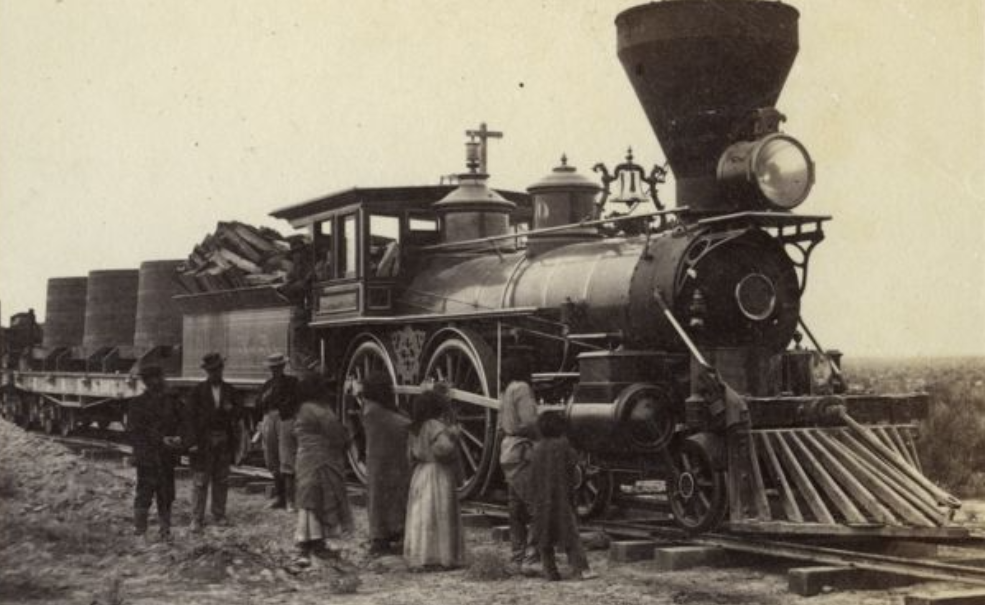01.31.2022. The above image is titled, “Shoshone Indians looking at Locomotive on Desert.” Courtesy of Stanford Libraries.
Every other week or less, we will offer short announcements, historical write-ups, links or references, in support of the May 19-21st Railroads in Native America (RNA) gathering.
Intro: With the support of Utah’s eight distinct tribal nations, and twenty supporting organizations, and with a geographical reach that extends across the United States, the Railroads in Native America Gathering (which is the second gathering of this type) seeks to reframe and offer an indigenous-based perspectives on the history of railroads. What will be offered, will not be a comprehensive story; instead it will be a series of offerings, storytelling, performances and presentations, different from the all-too-familiar narratives of industrial progress, economic development and Manifest Destiny.
It is after all, two of America’s largest and most complex, continuous historical narratives, intersecting now for three centuries (1840s to 2020s). The indigenous story, and the railroad story, with the latter a rolling economic force of industrialization and development, and the former a much longer narrative involving a web of life and sovereignty that extends before Euro-American settlement or the introduction of railroads, and continues as a strong and vibrant story to the present.
Future Short Blog Entries:
· Introducing RNA’s keynote speakers;
· Steering Committee’s desire for different type of meeting;
· Web sources, including teachers lesson plans, to help study “railroads in native America;”
· Friday lunch plans with Provo’s Black Sheep Café;
· A half-day field trip (Thursday May 29th) under the care of Shoshone elders, to the Golden Spike National Historical Park;
· Why scrappy, inclusive and forward looking Ogden, the once hub-city of America’s railroads, is part and parcel to our gathering;
· A short road gang story, a Native American son recalling his father’s near death stories;
· Navajo railroad workers on the Atchison, Topeka & the Santa Fe (US Library of Congress);
· Indigenous Encounters with the 1862-1869 Transcontinental Railroad on Plains and Rocky Mountain tribes;
· Union General John Pope’s foresightfull statement regarding the effect of the railroad on Native America.
· Railroad easements, one factor, leading to Colorado’s Sand Creek Massacre;
· Unattended Indian children traveling by train to Pennsylvania’s Carlisle Indian Industrial School; and so much more.

